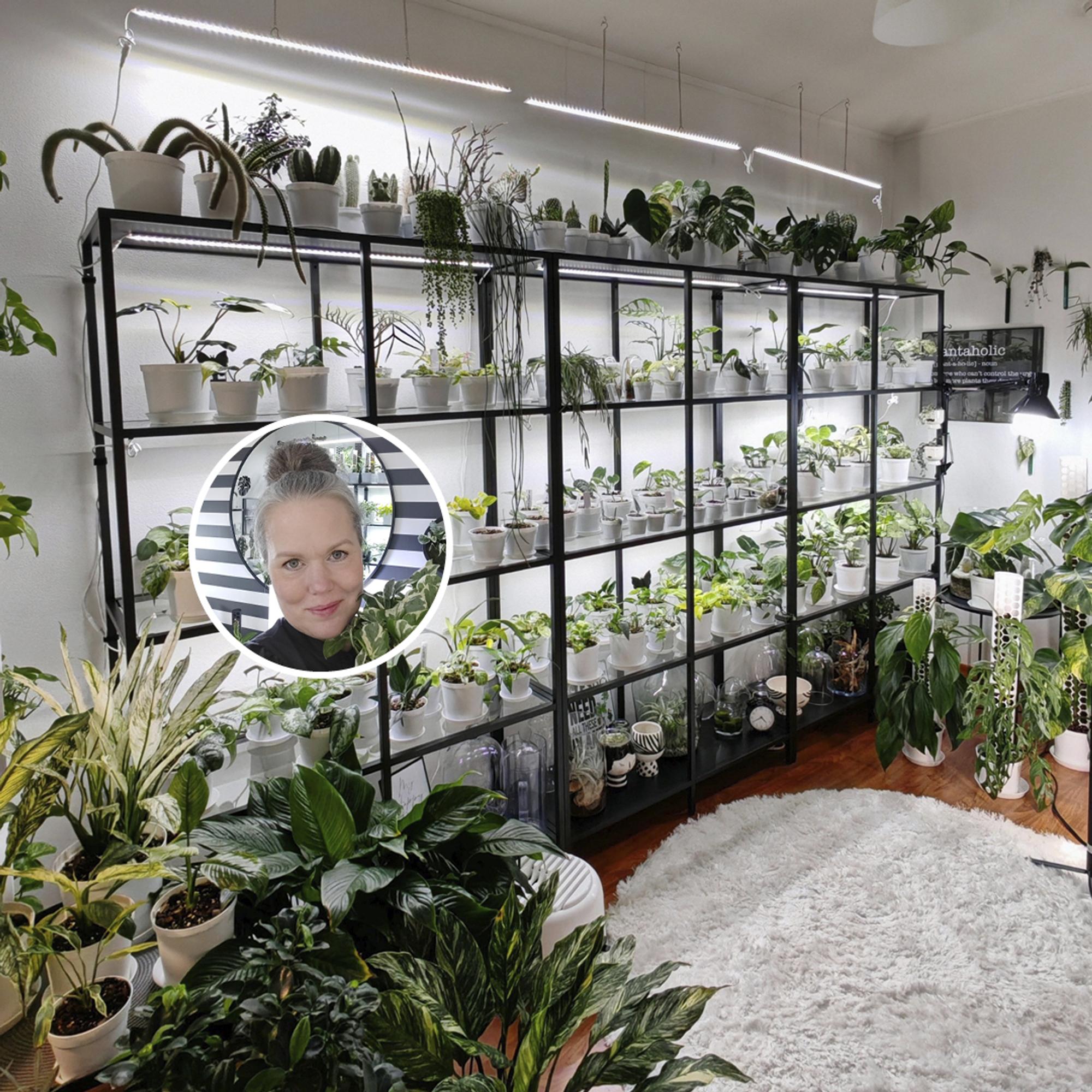
Nina transformed her daughter’s old room into a plant-filled haven to forget chronic pain
When her daughter moved out, Nina Kuusela thought she would gain an extra guest room in her home. But that’s not how it turned out in the end. Nina became hooked on houseplants, and the room transformed into a “greenroom.” All her plants thrive in a soilless substrate, although learning to use it took some time. Be sure to read Nina’s tips for beginner houseplant enthusiasts at the end of the article!
What got you hooked on houseplants?
About three years ago, when our daughter Tiia moved out, I decided to turn her empty bedroom into a guest room. I put a snake plant and a couple of other houseplants in our home in there. They added so much coziness and a pleasant vibe to the room that I immediately bought more plants. The real obsession began the following spring when I started to delve deeply into plant care. I joined many houseplant groups on Facebook, and I realized how vast the variety of houseplants truly is. So, the guest room transformed into a “greenroom.”
Can you tell us more about the plant room? What does it look like, and what kind of conditions does it provide for the plants?
The plant room is located upstairs in our two-story rowhouse. The room has a black-and-white interior that, in my opinion, beautifully highlights the colors of the plants. I’ve bought the furniture secondhand and from sales; I also purchase plants cost-consciously because I’m retired. I keep the room temperature consistently at 21–23 degrees Celsius and the humidity at 50–60 percent with a humidifier.

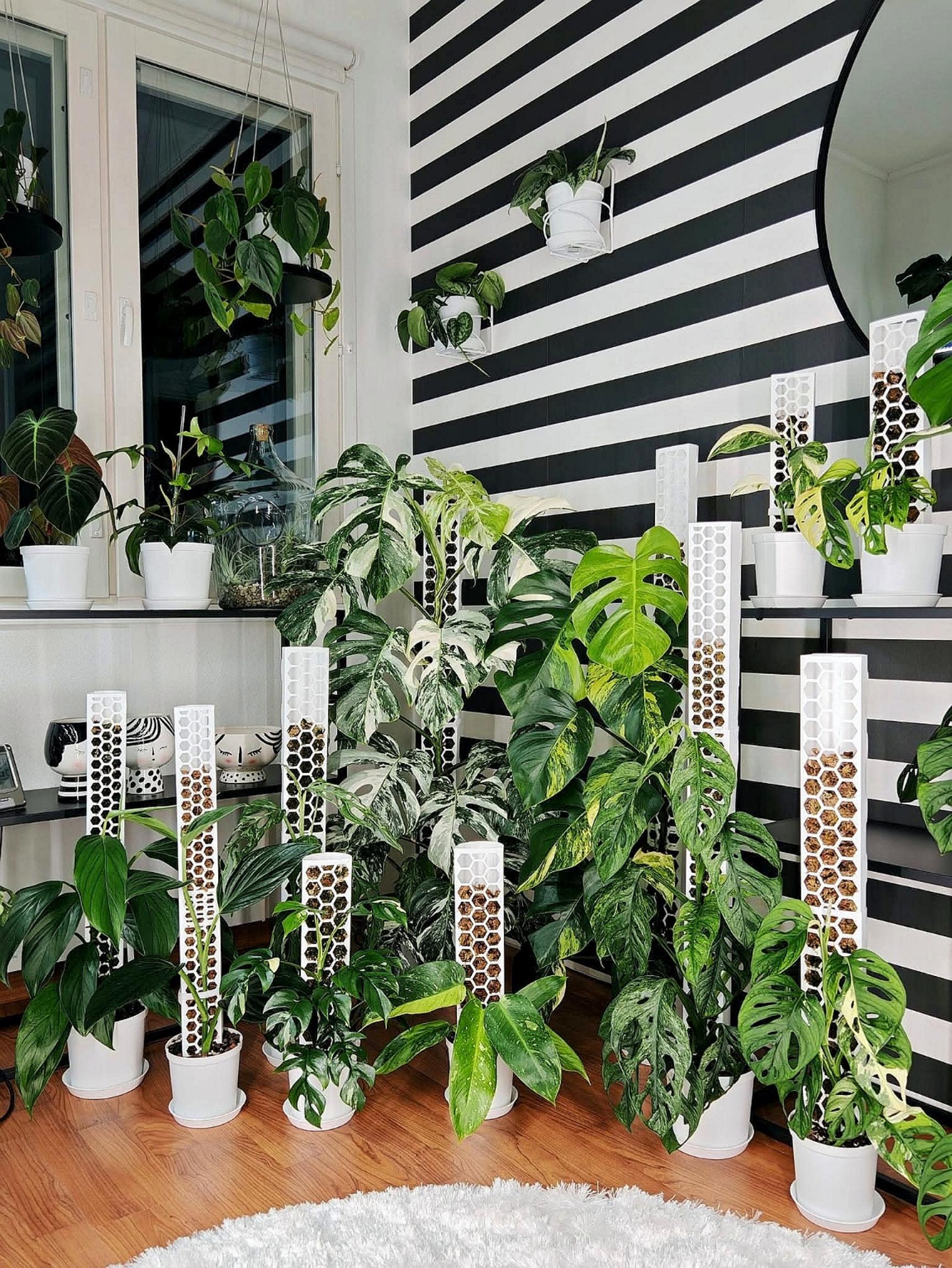

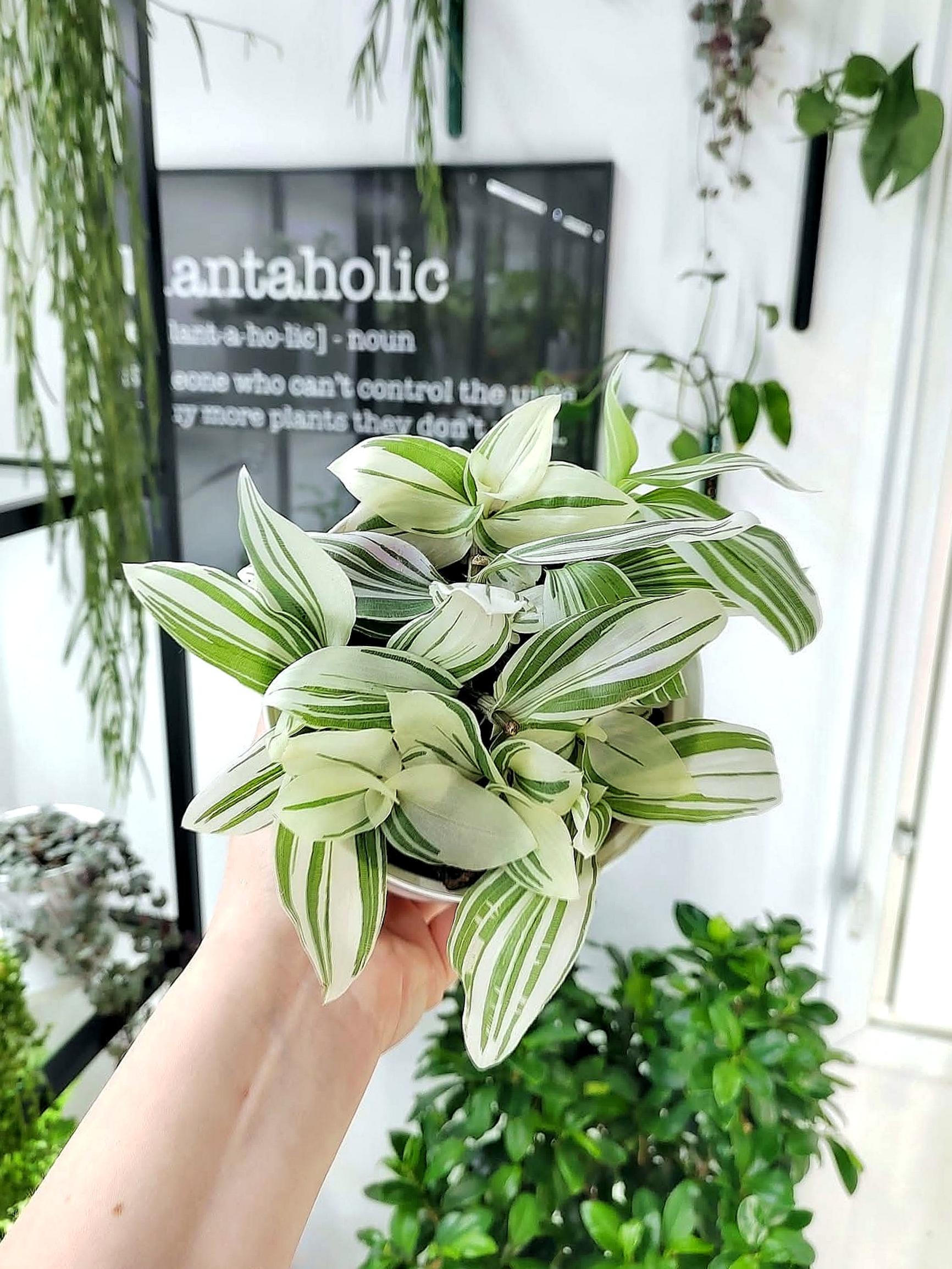
Do you have plants elsewhere in your home?
Absolutely. There’s greenery throughout the house, in every room. In the summer, I take all the spurges, cacti, jade plants, and ficuses outside to the terrace. They are my summer flowers. We also have air plants in a terrarium and on the walls.
How many houseplants do you have now?
I haven’t counted, but I’d guess I have about 200–250. I used to keep a list of all the species and varieties, but that fell by the wayside when things started to speed up.
Which are your favorites? Is there one treasure that stands out above all the rest?
Monsteras are definitely my favorites. I especially love the variegated ones—the more variegated the variety, the better. The Monsteras ‘Albo Variegata’ and ‘Aurea Variegata’ growing on moss poles are probably the dearest to me—they are so striking and magnificent! My greatest treasure is the almost white-leafed Monstera ‘White Monster’. It’s only the size of a pinky finger at the moment, but it is already so enchanting. This variety is a seedling produced through tissue culture; they are usually sold very small and known as tissue culture plantlets.
Golden pothos also have a special place in my heart. My plant collection hobby really began with them. They’re wonderfully easy plants, and the selection is broad—you can find them variegated, solid-colored, with crinkled leaves, or even with a bubbly leaf texture.

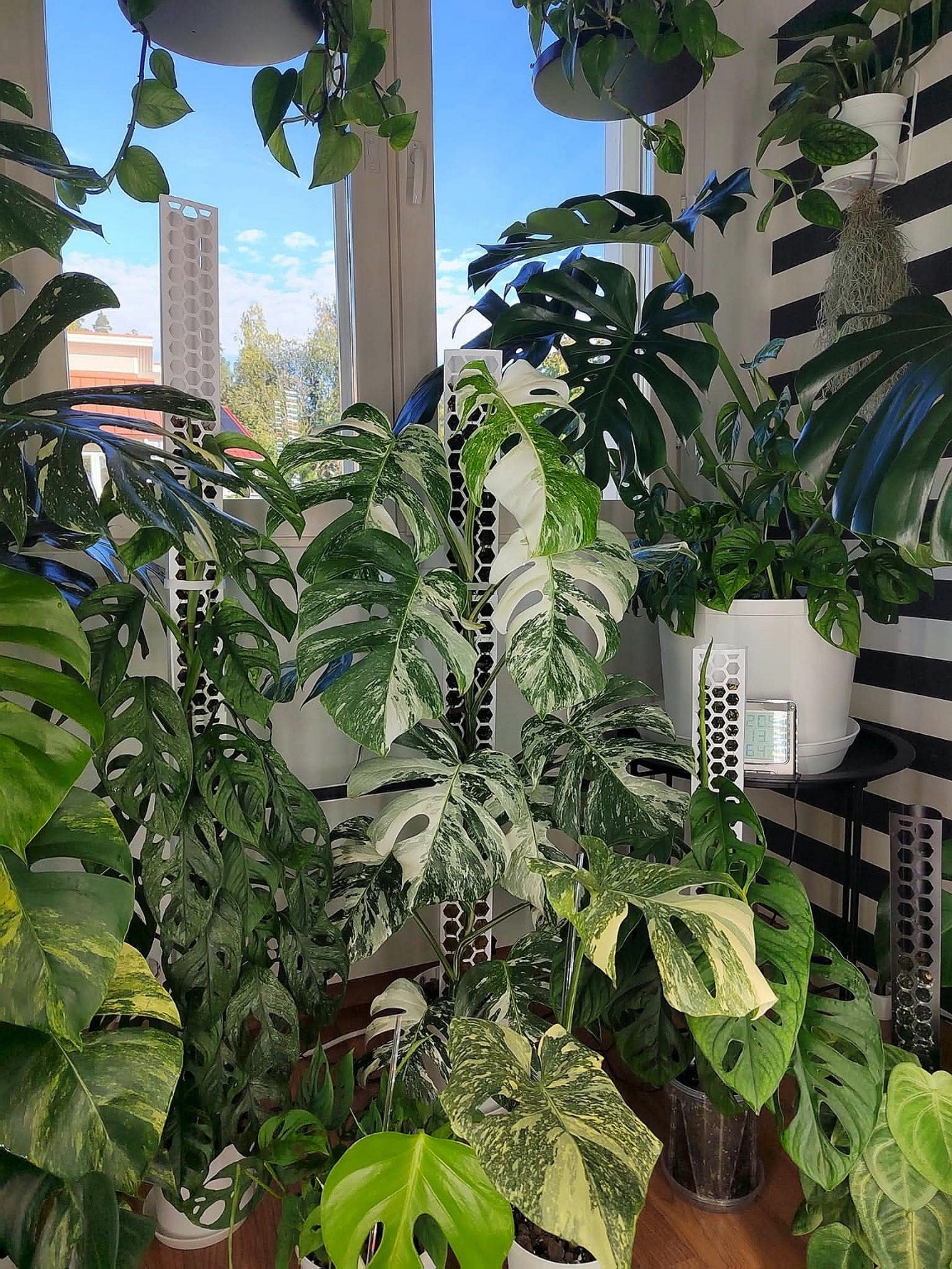

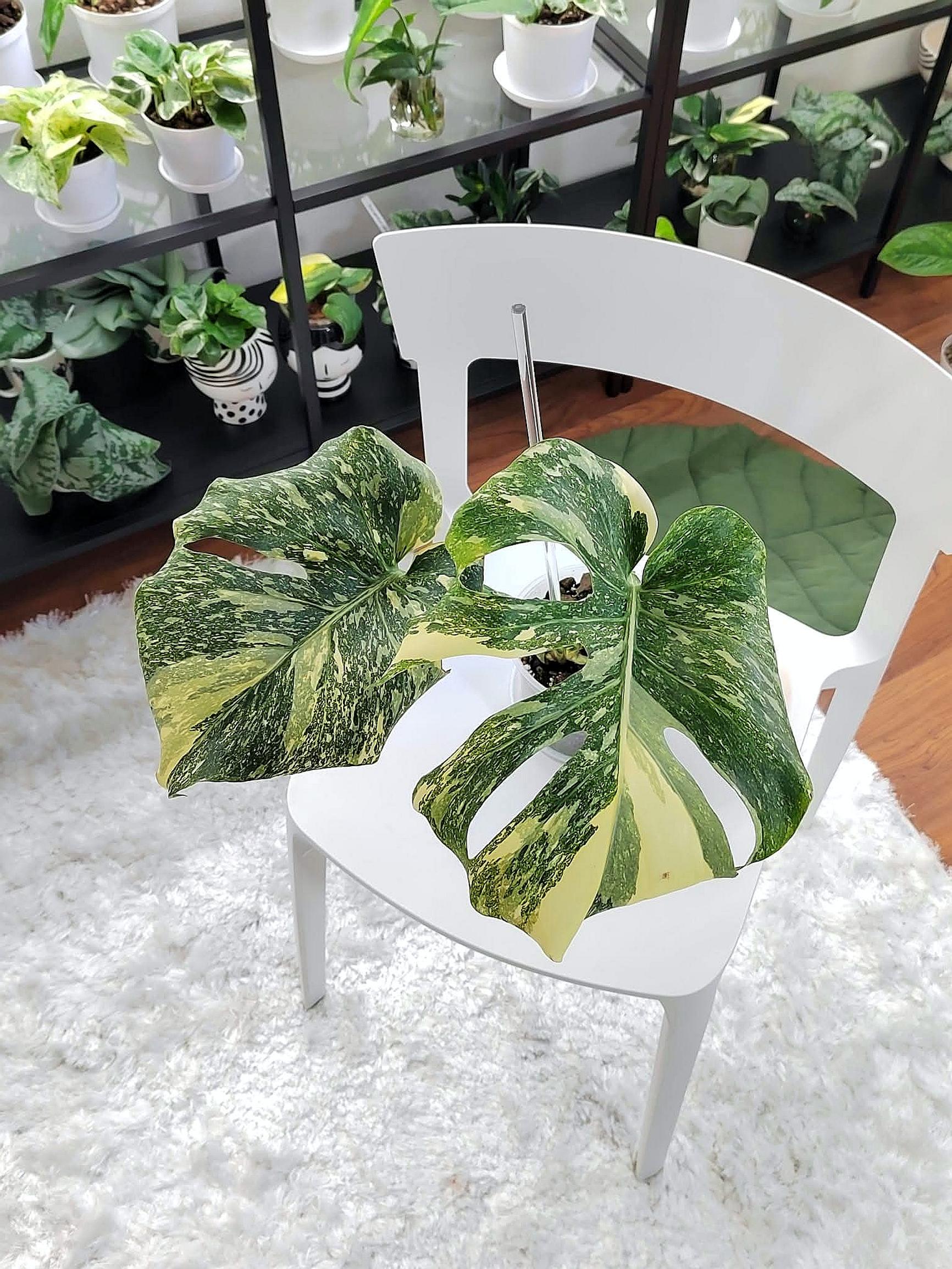

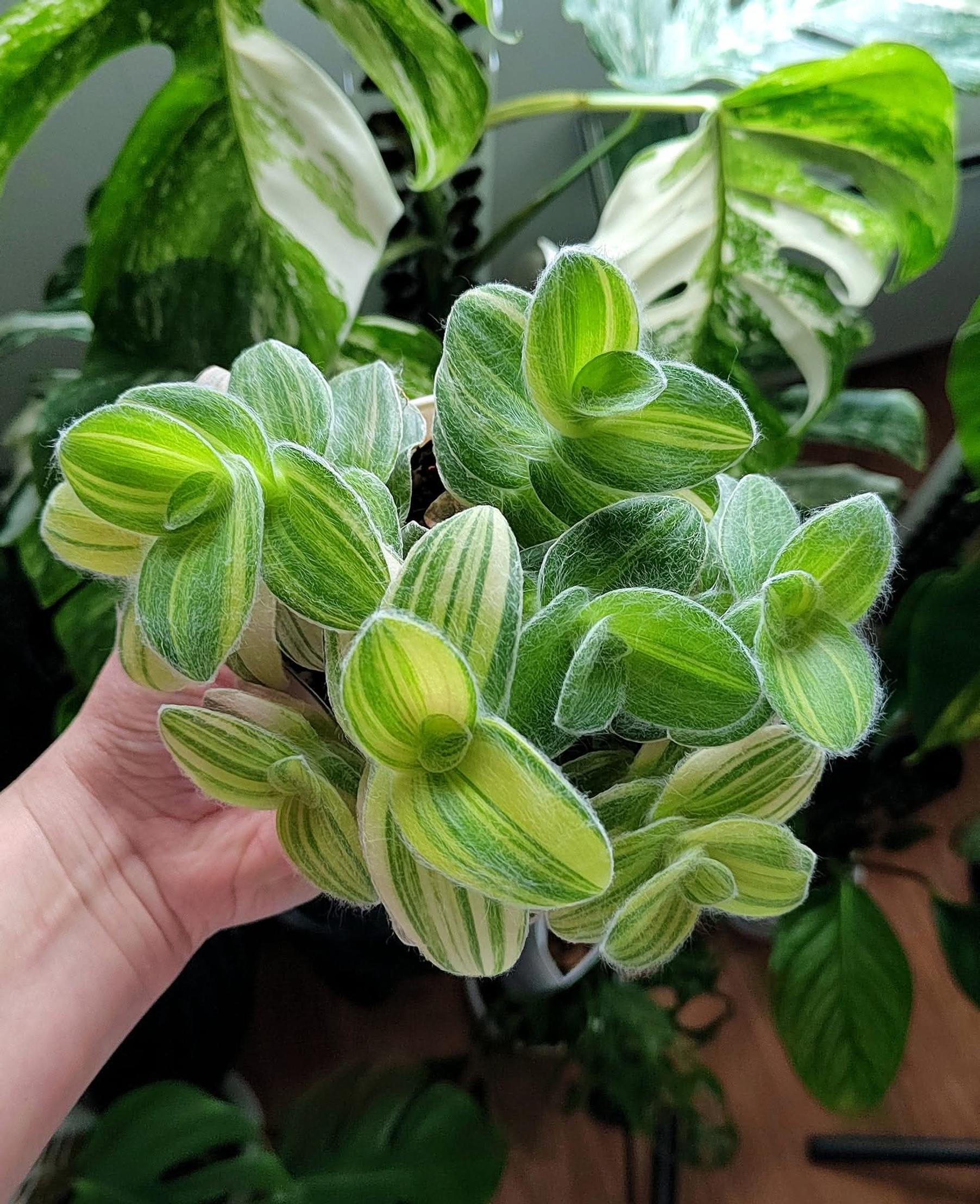
Do you provide your plants with extra light in winter?
Yes, I do. Not a single plant thrives without light, not even the so-called “closet plant,” eternity plant. In my plant room, there’s only one window, and it’s facing north—without lights, I could only keep a few plants on the windowsill; tropical plants would be out of the question.
My plants receive light 10 hours a day; all the lights are on timers. I use the lights year-round in the plantroom.
What kind of grow lights do you use?
On the shelves, I use LED strip lights that effectively illuminate all the plants on the shelf below. For plants climbing moss poles, I’ve gotten upright, pole-like grow lights that provide light evenly from top to bottom. I also use LED bulbs designed for plants in regular fixtures; they fit nicely into the decor.
My grow lights are 20–50 watts. If I had fewer lights or didn’t have to think about the electric bill, the wattage could be much higher. Fortunately, my plants are doing well with the current lights.

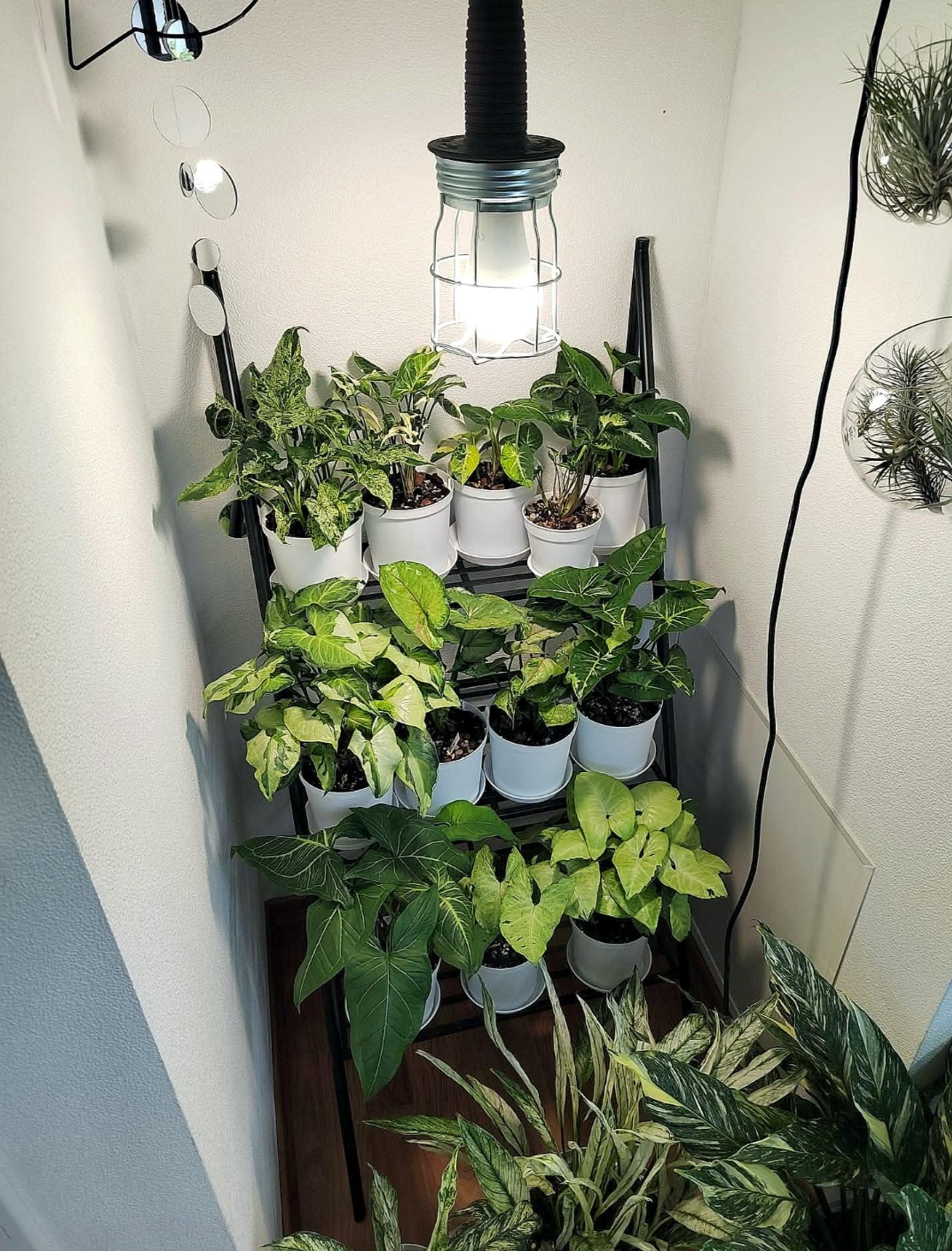

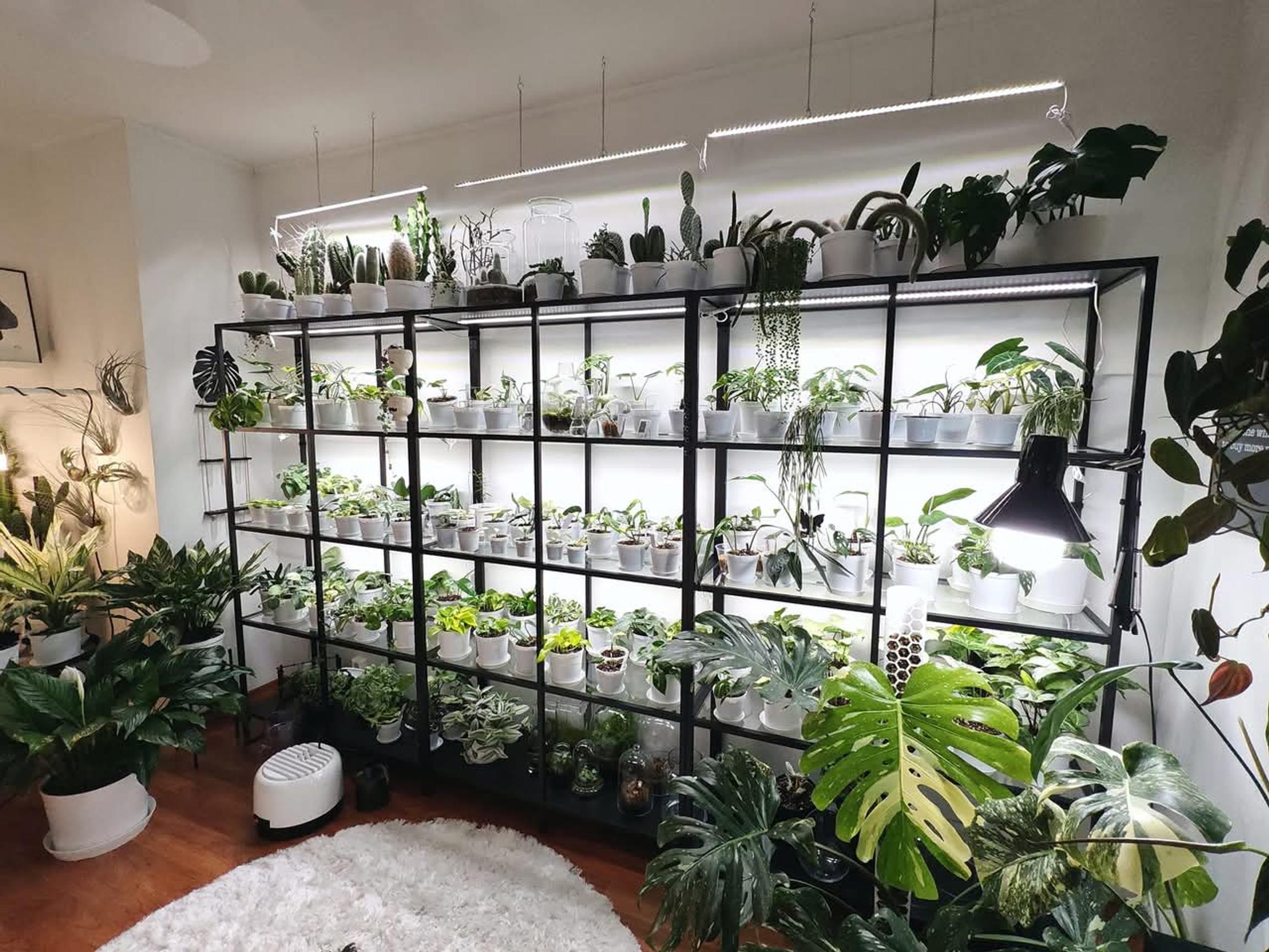
What about the substrate of your plants? Do you use ready-made soil or mix your own?
I switched to a soilless substrate about a year after starting my plant hobby. It’s more forgiving than soil when it comes to overwatering because it dries out so quickly. I can also easily shower the plants when I need to clean the leaves. A soilless medium doesn’t compact or clump like soil does over time. In my experience, roots love a chunky, airy growth medium. If the roots don’t get air or are sitting in wet soil, you can get ready to say goodbye to your plants.
For a long time, I mixed my own growth medium from coconut coir, Leca gravel, perlite, bark, biochar, and pumice. I got tired of that and asked Vp-lux, a supplier of cultivation supplies, if they would make it for me. It worked out, and now anyone can order it from their online store. I’ve named it Easy Mix because it’s easy to acquire and store. I use the same growth medium mix for all my plants, from cacti to aroids. I just adjust the watering and fertilizers for each plant.
Have your plants suffered from diseases or pests?
I regularly inspect my plants, and that’s probably why I haven’t had any major pest catastrophes. I’ve found individual thrips and have controlled them with insect spray. I must admit, though, that I’m scared of a pest invasion. I panic quickly if I see things like bits of perlite in the wrong place. I have to check every suspicious speck or odd-looking leaf with a magnifying app because you need to react immediately to any potential pest.

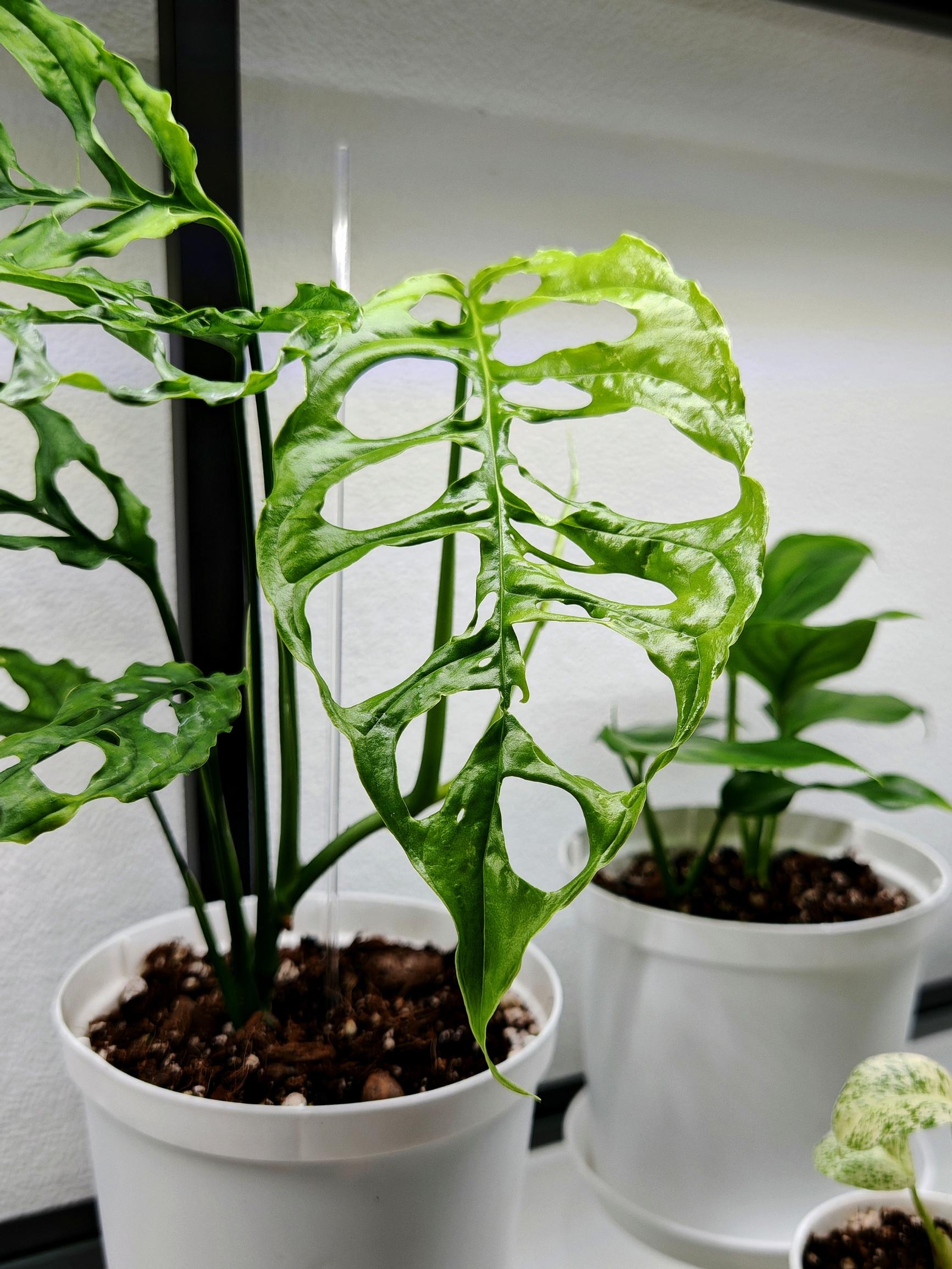

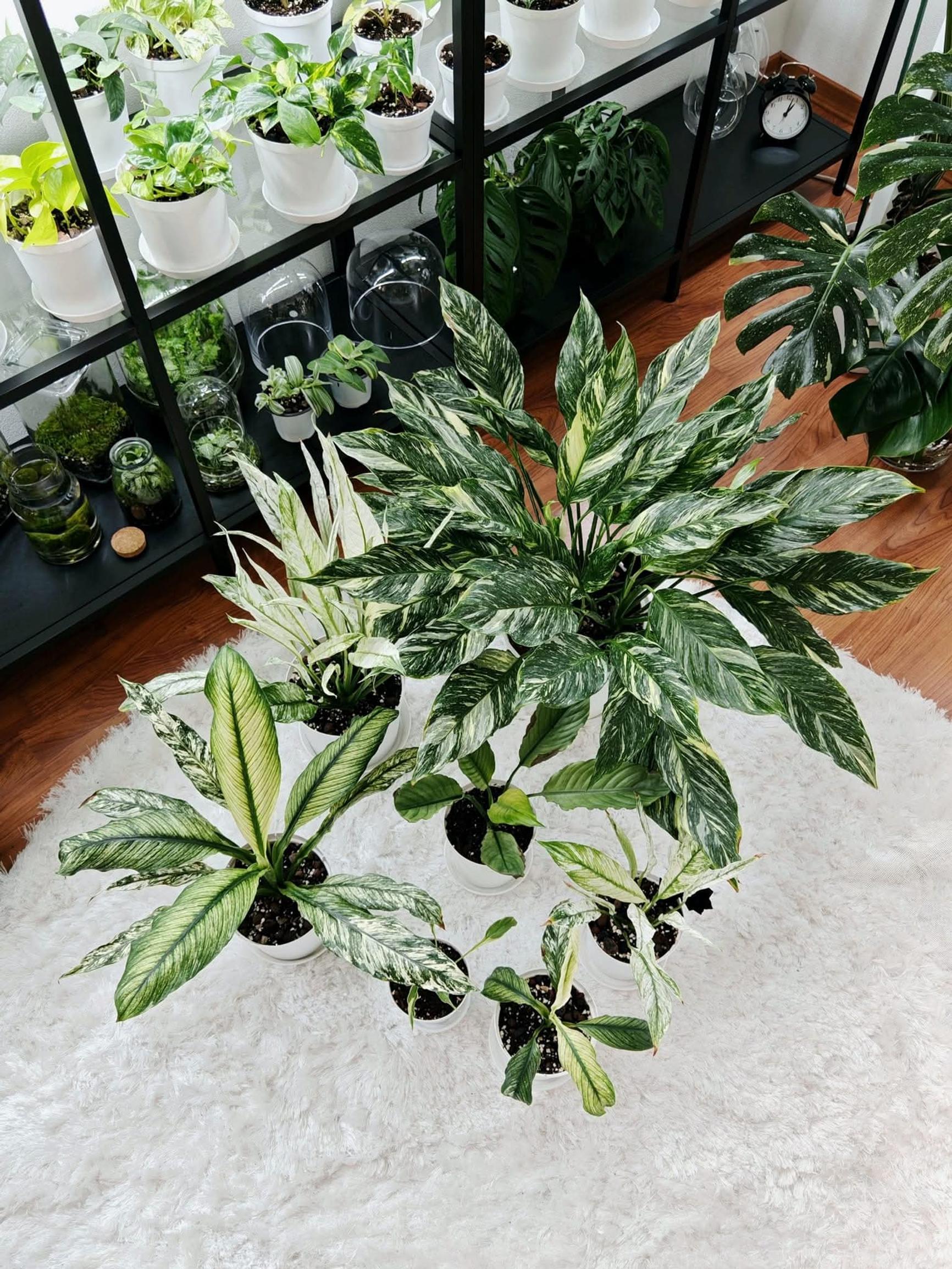

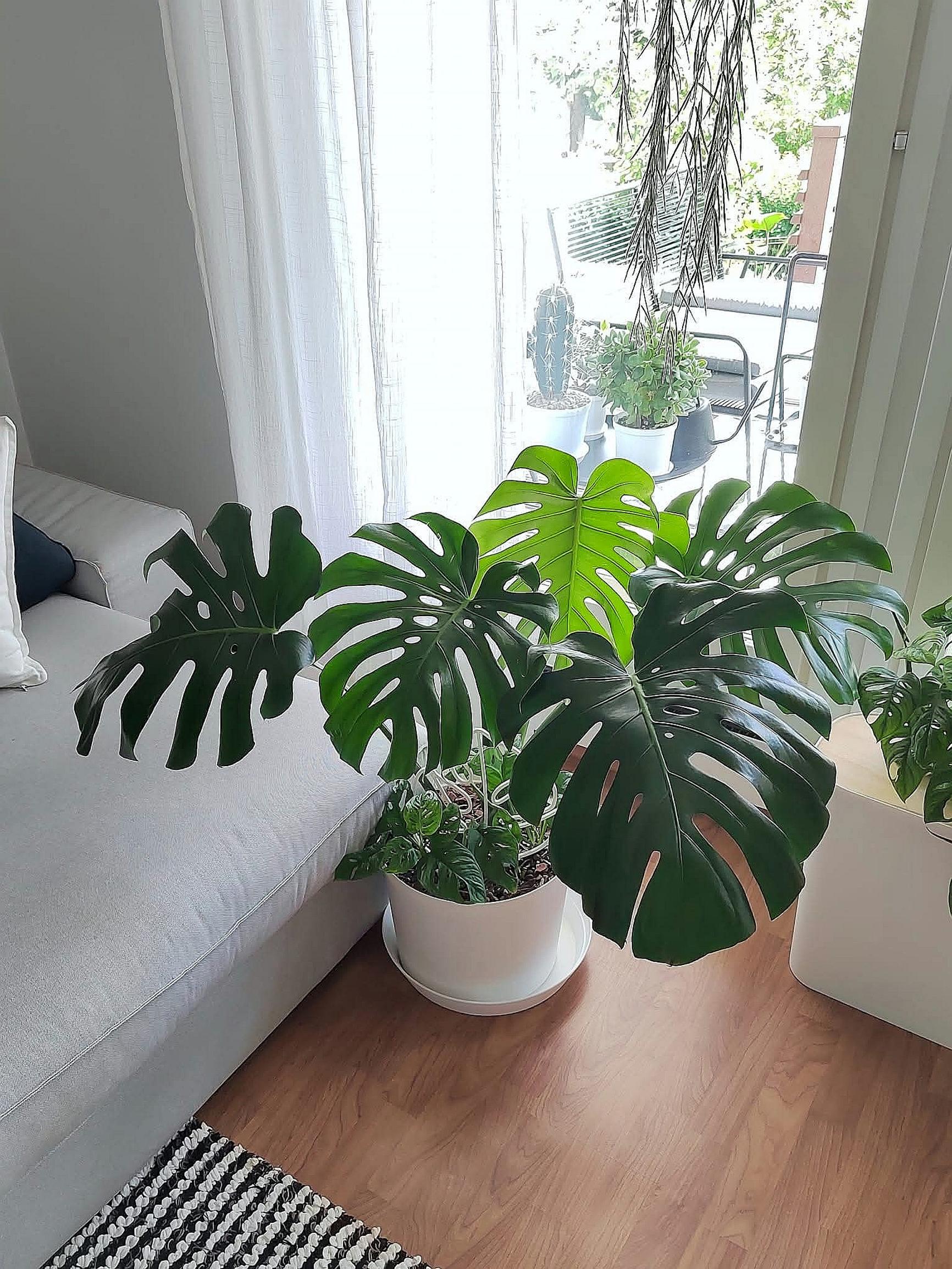
Have you had any mishaps with your plants?
Oh, yes! When I switched to a soilless substrate, I drowned my collection of 50 different arrowhead plants because I watered them too often. It was a bitter experience. An even bigger mishap happened at the end of the summer when I bought a slow-release fertilizer that apparently reacted with some leftover nutrients in the substrate. I lost a huge number of plants to root rot. Fortunately, I was able to take cuttings from many of them, and through Instagram’s plant community, I got new starters. Incidents like these teach you to consider the plants’ needs.
What has been your most important insight into growing houseplants?
The positive impact of plant care on my own mind. I’m on disability pension and have chronic pain and various challenges due to Ehlers-Danlos syndrome. When I’m caring for and admiring my plants, time passes, and I’m so in the moment that everything else fades away. I get excited about new challenges and constantly read to learn more.

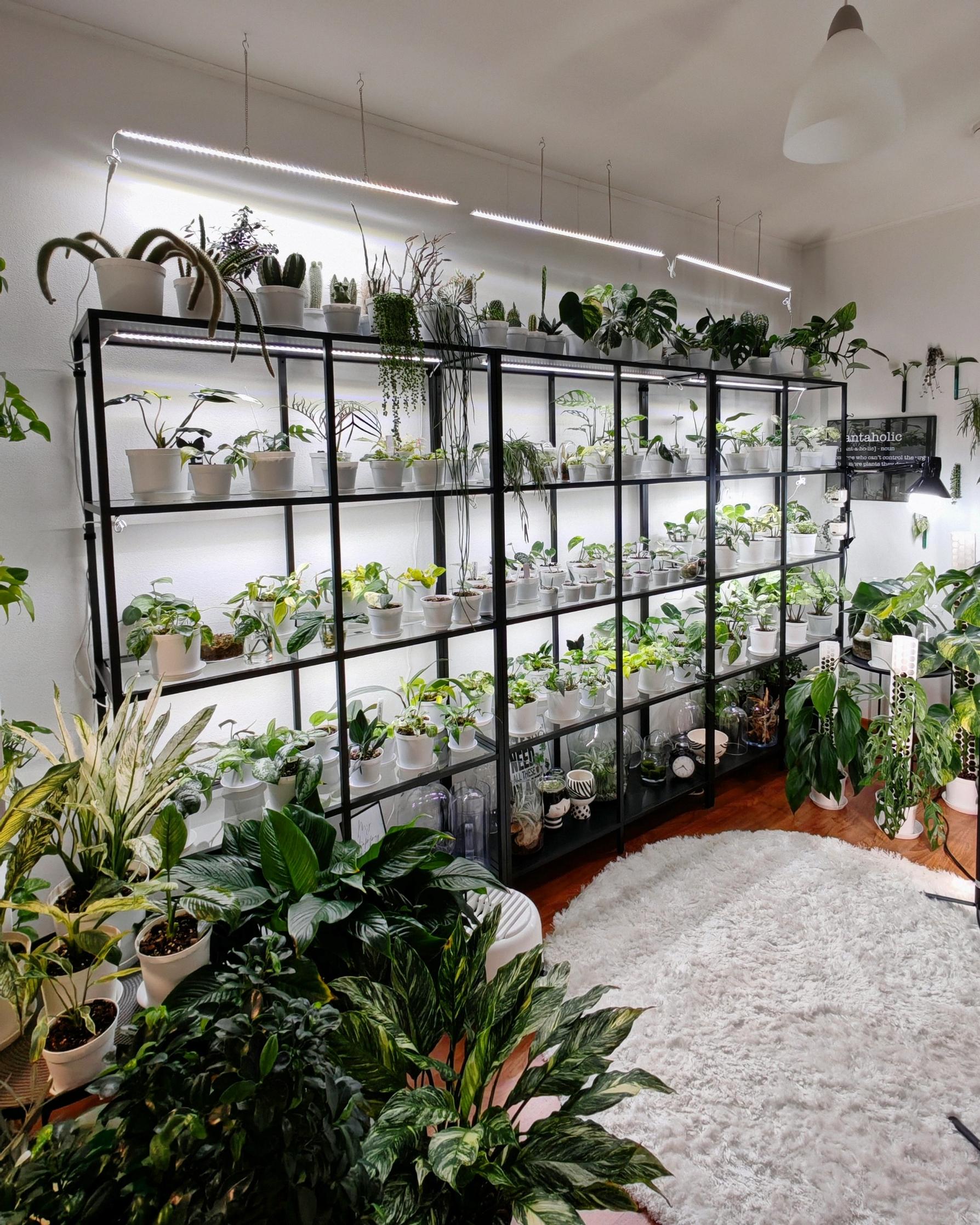
Nina’s tips for beginner houseplant enthusiasts

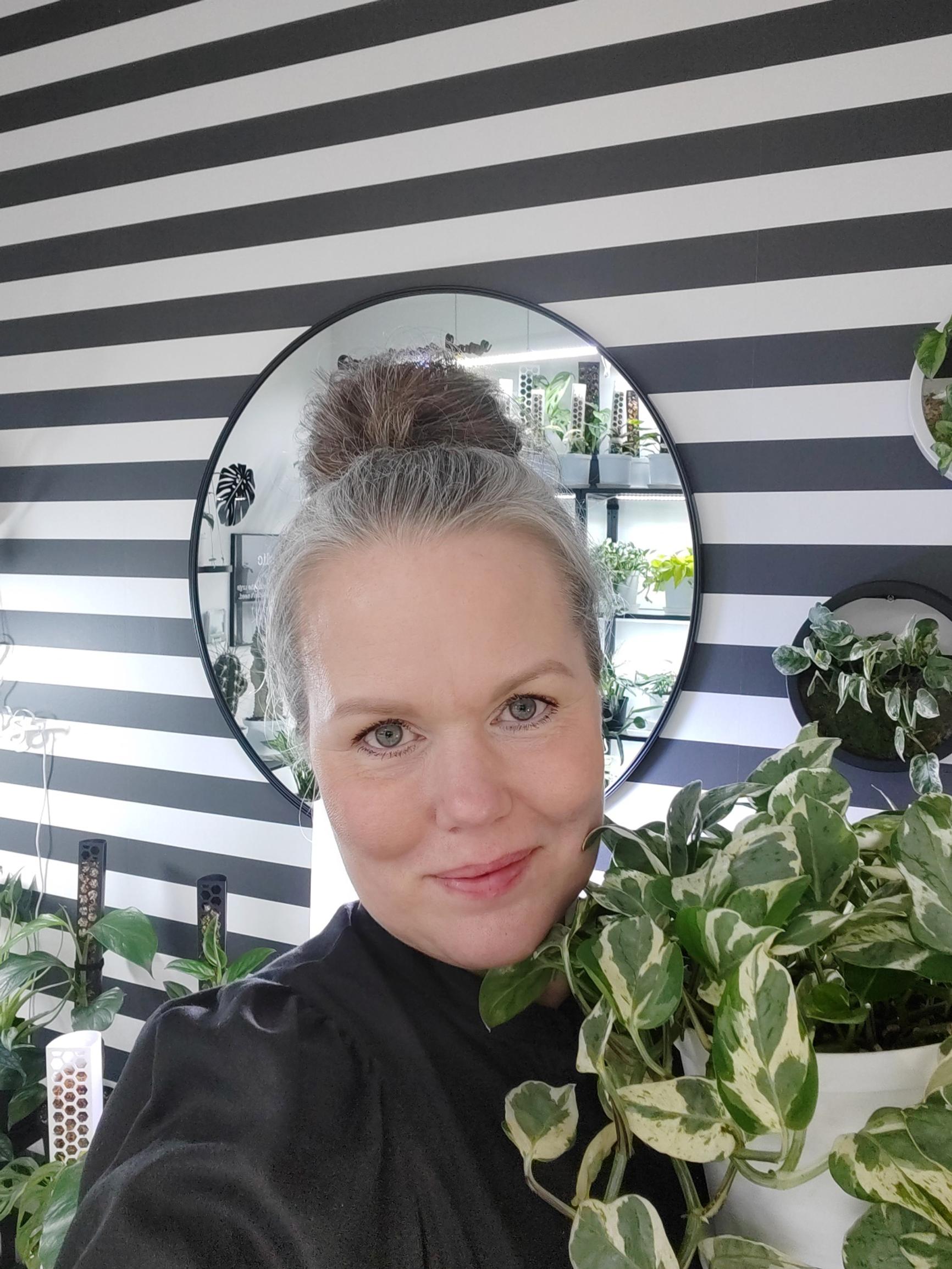
- Keep new plants in quarantine at first, separate from your other plants, until you’re sure they don’t have any pests. Examine the upper and lower sides of the leaves with a magnifying glass or a magnifier app on your phone. Pests are extremely small and aren’t always visible to the naked eye.
- Ensure your plants get enough light. Grow lights are absolutely essential if the plant can’t be placed in good light by a window. Download a lux meter app on your phone if you want to know if you have sufficient light in your home.
- Water plants according to their needs, not on a schedule. Find out what requirements your plant has. Some species like to dry out between waterings; others prefer consistent moisture. Before watering, check whether the growing medium has dried out. A wooden stick is a great helper for this. Push the stick all the way to the bottom of the pot and wait a moment before pulling it out. If the stick is completely dry and clean, the medium has dried. If something sticks to it, the medium hasn’t dried throughout.
- Avoid pots without drainage holes. If you like using decorative pots, plant the plant in a pot with drainage holes and place it inside a decorative pot that’s a few centimeters wider in diameter. It’s important that there’s an air gap between the pots. It’s easy to pour out any water that collects at the bottom of the decorative pot after watering, and the roots won’t suffer in a wet medium.
- If you buy a plant when it’s freezing outside, wrap it carefully. Use as many layers of paper as there are degrees below zero outside. For example, at -10 degrees Celsius, you’ll need 10 layers of paper. A cooler is an excellent transport container for small plants; you can add a hot water bottle inside for extra warmth.
- Remember that mistakes don’t matter. Everyone makes mistakes, and lost plants can always be replaced with new ones. Caring for plants isn’t rocket science, it’s biology. Start with easy plants, and as your skills and knowledge grow, you can move on to more challenging species.
You can follow Nina on Instagram @my_greener_home.


